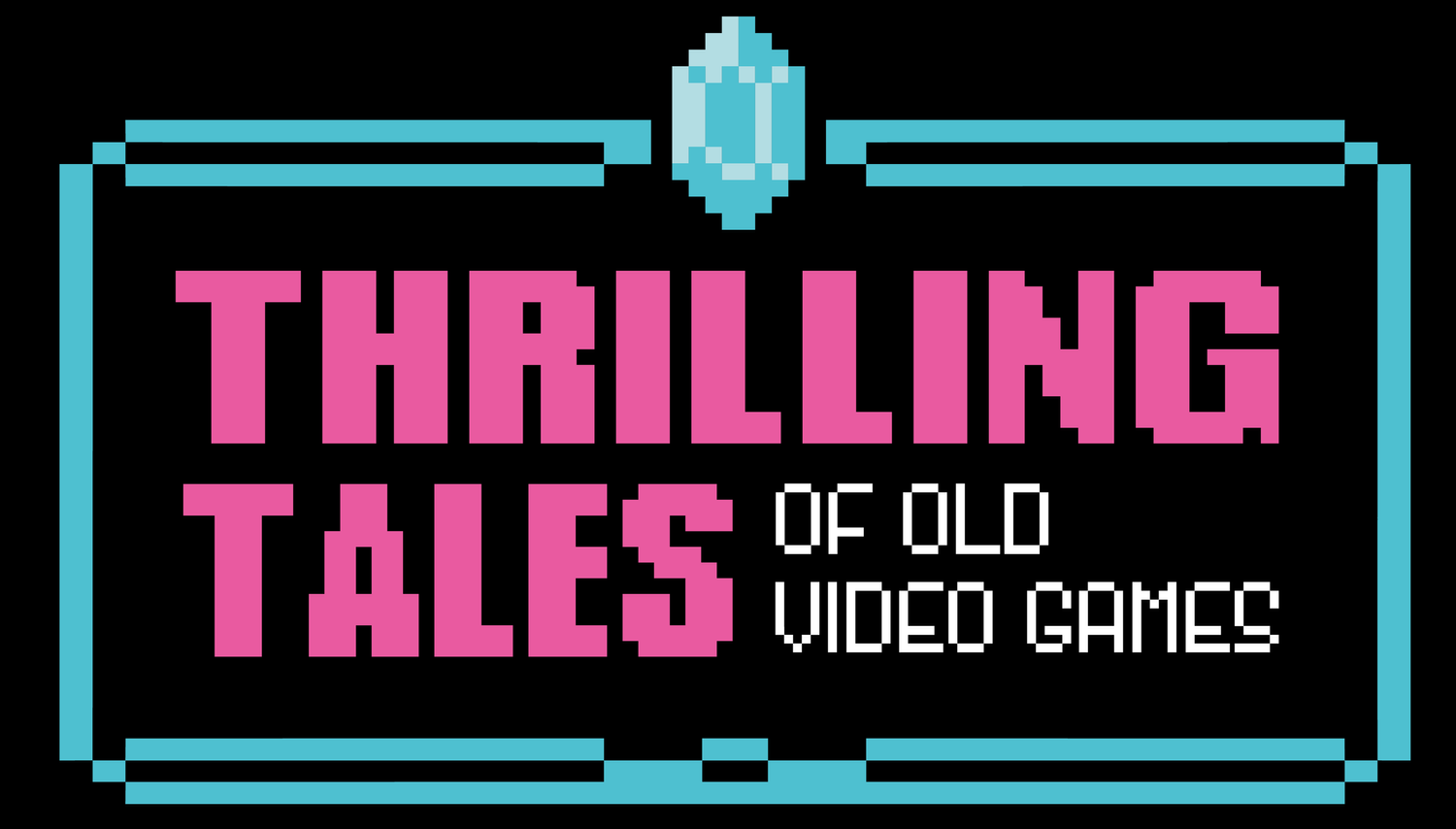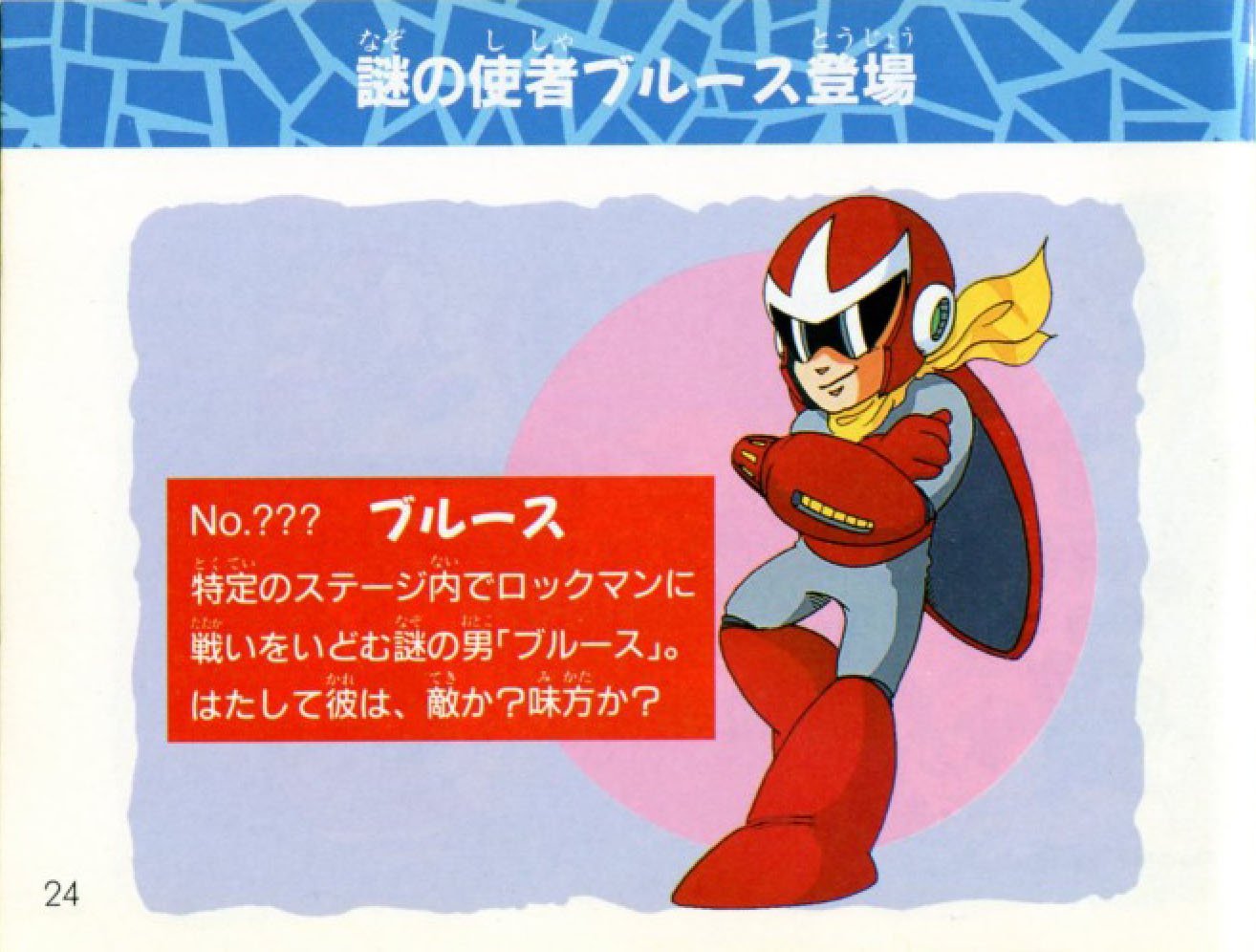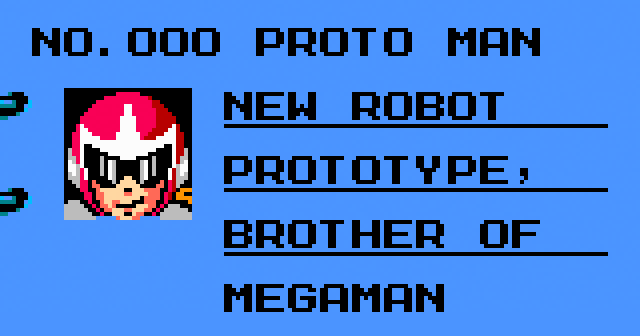Meet Mega Man’s Brother, Bruce
I’ve got this distinct memory of being seven years old and talking to a kid at school who owned Mega Man III, which I hadn’t played yet and wouldn’t until I received my copy for Christmas. It does not go well.
To set the scene, I was a regular reader of video game magazines, so I was fairly well-versed in titles I hadn’t actually played yet. I tried to be cool and say that I knew that this new Mega Man adventure introduced a new character who was Mega Man’s brother, and that this character’s name was Bruce. And this kid I was talking to — whose first and last name I still remember, BTW, not that I’m bitter about this — wasn’t having it, saying something like, “Yeah, weirdo, there is no character who is Mega Man’s brother in this game, and there is no character named Bruce.” I tried to protest, because I was fairly sure that I was not wrong, but I also hadn’t played the game, and therefore I didn’t really have a leg to stand on.
The memory of this incident has lingered in my head ever since, mostly because being the kid who knew about video games was, like, my thing, so being so very wrong about something like Mega Man having a brother named Bruce was a real blow to my playground status. Years later, I’d wonder why the hell I was ever so sure that I had this wrong fact in my head. Had I just made that up?
No, it turns out.
Thanks to Matthew Green’s video game website Press the Buttons, which I’ve been following since its inception and which is still updating almost twenty years later, I can be fairly certain that I had this information in my head thanks to a mistranslation that ran in the November 1990 issue of GamePro magazine. (It’s the one with Gremlins 2 on the cover, if that sets the time period at all.) In a preview of Mega Man III, which you can read in full here, the character of Proto Man is misidentified as Bruce.
Why? Well, in Japan, the character is named Blues — which is confusing to English-speakers because Mega Man is famously blue one and Proto Man is, in fact, red. In keeping with the series’ music-themed names, this character is named after the music genre, which in Japanese would be ブルース or burūsu. Coincidentally, the given name Bruce is rendered in Japanese exactly the same way: ブルース or Burūsu. Case in point: the Japanese Wikipedia page for the actor Bruce Springsteen. I do wonder if this similarity is confusing for Japanese-speakers, though I guess it’s not any stranger than an English-speaker finding out the red robot guy is seemingly named after the wrong color.
I bring this up not only because it means I did not fabricate Bruce the robot out of nothing back in the day, but also it amuses me to imagine some writer at GamePro magazine — Tobar the 8 Man, per the byline — being told this new character’s name was Bruce. The reaction I picture in my head goes something like, “Okay, Bruce the robot? Makes sense to me. Let’s get this to the printer.”
Technically speaking and mostly on accident, I was correct in that this character was Mega Man’s brother, although the kid I was talking to back in the day wouldn’t have known this if he hadn’t beaten the game yet. The English localization actually does a pretty good job of hiding this plot development until the ending; there is no mention of Proto Man or any type of Mega-brother figure in the North American instruction manual. And in either version of the game, he’s given a fake name initially: Break Man (ブレイクマン or Bureikuman). The name is fairly nonsensical in the English localization, though if you were playing the Japanese version of the game and you supposed that it was a reference to breakdancing, I guess you could intuit that he might be part of the Mega family by virtue of being another music reference.
Then again, the Japanese instruction manual for Mega Man III all but gives it away. As this site explains, it introduces the character on his own page — without the full face mask he sports in the one-on-one battles and with text that makes you guess there’s something more going on here.
Translation: “The man of mystery, ‘Blues,’ appears in certain stages to challenge Rockman to battle. But just what is he? An enemy? An ally?”
The following two pages summarize the plots of the previous two games and then, without any real text explanation, show art Blues/Proto Man without a helmet at all, alongside our hero and Roll.
Do we ever see Proto Man’s hair aside from this?
Which makes the association pretty obvious?
The ending spells it definitively, and I also have a clear memory of experiencing this, weeks after that Christmas, when I finally beat the game. It was a moving thing to watch, and an early example of video games being able to connect with players on an emotional level. In the ending sequence, you see Mega Man wandering through a green landscape while Proto Man’s distinctive whistle theme gives way to a version that’s more lushly orchestrated, at least by the standards of 8-bit music. All the while, the bottom part of the screen screen ticks through a catalogue of robots invented by Mega Man’s creator, the benevolent Dr. Light. It starts with the eight Robot Masters from the first Mega Man, before getting to Roll, then Mega Man and then finally No. 000: “Proto Man: New Robot Prototype, Brother of Mega Man.” And then Mega Man looks up and sees his brother’s face in the sky.
Translation: “#000 Blues / Prototype robot, went missing just before the shutdown of the circuit.”
There’s another aspect to unpack about this character’s name, though I’m not sure it’s necessarily obvious in the English or the Japanese translations. Every time Proto Man/Blues shows up to fight Mega Man, the action freezes so the game can play a few bars of his distinctive theme song, which is for sure a melancholy one but I’m not sure is composed in the style that’s anything close to blues. Correct me if I’m wrong; blues is a genre I’m not super well-versed in, but knowing what I know about how blues music sounds, I don’t hear it in this composition, even trying to imagine how the genre might sound compressed into the constraints of 8-bit music. I’m not sure how I what genre I’d put it in, honestly.
What’s interesting about this, to me, is that the composer zigged when you might have expected him to zag. The etymology of blues is debated — kind of, to an extent. It’s usually presumed that the term comes from where you’d think — songs about sadness, owing to the fact that independently from music, the word blues was understood to refer to melancholy going back to 1741, more than a century before this style of music became a known, named thing. Perhaps parallel to this is the fact that an important element of the genre is the blue note, sometimes called a worried note, which is a note that is intentionally played at a slightly different pitch from what you’d normally expect. I couldn’t find consensus for whether the blues or blue notes came first. Etymonline isn’t sure, but posits that blue note might have come about as a phrase first, while Merriam-Webster says the notes were called this because of their association with blues music and not the other way around. Whichever did come first, it seems like both terms might be playing off the same metaphorical extension: notes being played “off” could be to an otherwise cheerful person feeling down. A sad person is, in a sense, also slightly off. The roots of this metaphor run deep, at least English.
What’s interesting to consider about blues music in Japan is that the association between the genre, the color and the emotion wouldn’t necessarily be understood there the way it is among English-speakers. While the color blue has been associated with sadness in English going back to the 1400s, most other cultures don’t make the same idiomatic associations between color and mood — which is to say that blue doesn’t signify sadness the world over. And while I’m sure the composer of Proto Man’s theme, Capcom legend Yasuaki “Bun Bun” Fujita, could have easily understood this connection by studying music, the end result was a composition that matched the emotional associations of the color blue and not so much the musical genre, even if music genres are the unifying theme for the Mega family. It’s melancholic, but it’s not the blues style of melancholy. It’s got the blues (emotionally), but it’s not composed to evoke the blues (genre-wise).
In fact, as far as I know, the one piece of music associated with Proto Man in the entire series that actually sounds like blues is the shop theme he was given in Mega Man 10, composed by Yu Shimoda, who I’d like to think was doing right by this character and giving him the genre he deserved in the first place.
Not that Fujita’s MMIII theme is anything other than iconic, genre notwithstanding. I’m just glad Proto Man wasn’t actually called Bruce, in the end, because I don’t think that’s a good name for a robot.
Miscellaneous Notes
Proto Man’s association with the name Bruce doesn’t end with GamePro. In the 2007 title SVC: Card Fighters DS, a special move that is in other games called the Proto Stroke is mistakenly referred to as Bruce Strikes Back in the North American localization. And in a way, I suppose that’s accurate. Bruce really did strike back in having returned one more time. Bruce’s return might not be an accident, howeerv, as it seems like a deliberate reference to the 1982 Bruce Lee movie Bruce Strikes Back.
Let ‘em have it, Bruce!
Given that Capcom ditched Mega Man and Proto Man’s original, music-themed names in favor of something Western-friendly and therefore generic, it’s always struck me that the series’ main female character, Roll, kept her name, even if it was made incomprehensible by the fact that she wasn’t paired with a male character named Rockman. It’s sort of a reverse Princess Peach situation, where she was the one character not to be renamed. For years, I wondered if she was, like, named after the small piece of bread you get served with dinner sometimes, until I finally figured out that she was a pun on rock ‘n’ roll. The other musically-themed character names are usually easy to spot even with their localized names, with the exception being Enker, who’s named for enka, a genre that just isn’t as widely known outside Japan.
The GamePro spread on Mega Man III accidentally(?) makes a sex joke that I’m still laughing about.
It’s all the funnier when you realize that by virtue of having both Hard Man and Top Man, Mega Man III has the gayest Robot Master line-up in the whole franchise, not that that combo is going to get them anywhere. Also? That’s not actually a great gameplay tip that will help you defeat this boss.
Also also? Now that I think about it, that GamePro preview really gave away the ending to the game, didn’t it? Hmm.
The reason I fell back in with Press the Buttons is that it linked to my piece on Vram Sroker and the wackadoo names in the end credits to the original Castlevania. And that’s wild because I can remember when PtB linked to me more than a decade ago, to a piece I put up on my old blog about obscure Mario characters. If I really think about it, that post was a forerunner to what I’m trying to do with this site. Funny how that works out.










